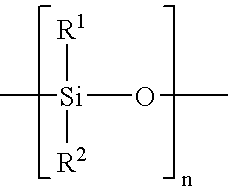Vascular cell culture patterning substrate
a technology substrate, which is applied in the field of vascular cell culture substrate, can solve the problems of low production efficiency, failure to form objective blood vessels, and inability to survive for a long period under flotation conditions out of organisms, and achieve the effect of high quality
- Summary
- Abstract
- Description
- Claims
- Application Information
AI Technical Summary
Benefits of technology
Problems solved by technology
Method used
Image
Examples
first embodiment
(1) FIRST EMBODIMENT
[0066] First, the first embodiment is the vascular cell culture patterning substrate, wherein: a photocatalyst-containing vascular cell adhesion layer is formed on the base material; the photocatalyst-containing vascular cell adhesion layer contains at least: a photocatalyst; and a vascular cell adhesive material which has adhesive properties to a vascular cell, and is to be decomposed or denatured by an action of a photocatalyst upon irradiation with energy; and in the vascular cell adhesion-inhibiting portion, the vascular cell adhesive material have been decomposed or denatured by an action of a photocatalyst upon irradiation with energy.
[0067] In this embodiment, since the photocatalyst-containing vascular cell adhesion layer contains the photocatalyst and the vascular cell adhesive material, a vascular cell adhesion-inhibiting portion having the vascular cell adhesion-inhibiting properties can be provided by decomposing or denaturing the vascular cell adhes...
second embodiment
(2) SECOND EMBODIMENT
[0117] Next, the second embodiment is a vascular cell culture patterning substrate, wherein: a photocatalyst-containing layer and a vascular cell adhesion layer are formed on the base material; the photocatalyst-containing layer contains at least a photocatalyst; the vascular cell adhesion layer contains a vascular cell adhesive material which has adhesive properties to a vascular cell, and is to be decomposed or denatured by an action of a photocatalyst upon irradiation with energy; and in the vascular cell adhesion-inhibiting portion, the vascular cell adhesive material have been decomposed or denatured by an action of a photocatalyst upon irradiation with energy.
[0118] In this embodiment, since the vascular cell adhesion layer is formed on the photocatalyst containing layer, by irradiating the energy to the region on which the vascular cell adhesion-inhibiting portion is formed, the vascular cell adhesive material in the vascular cell adhesion layer can be d...
third embodiment
(3) THIRD EMBODIMENT
[0140] Moreover, the third embodiment is the vascular cell culture patterning substrate, wherein: at least a vascular cell adhesion layer is formed on the base material; the vascular cell adhesion layer contains a vascular cell adhesive material which has adhesive properties to a vascular cell, and is to be decomposed or denatured by an action of a photocatalyst upon irradiation with energy; and in the vascular cell adhesion-inhibiting portion, the vascular cell adhesive material have been decomposed or denatured by an action of a photocatalyst upon irradiation with energy.
[0141] In this embodiment, by disposing the vascular cell adhesion layer and the photocatalyst-containing layer facing to each other, and irradiating the energy in a pattern of the vascular cell adhesion-inhibiting portion to be formed, the vascular cell adhesive material in the vascular cell adhesion layer is decomposed or denatured by the action of the photocatalyst in the photocatalyst-cont...
PUM
 Login to View More
Login to View More Abstract
Description
Claims
Application Information
 Login to View More
Login to View More - R&D
- Intellectual Property
- Life Sciences
- Materials
- Tech Scout
- Unparalleled Data Quality
- Higher Quality Content
- 60% Fewer Hallucinations
Browse by: Latest US Patents, China's latest patents, Technical Efficacy Thesaurus, Application Domain, Technology Topic, Popular Technical Reports.
© 2025 PatSnap. All rights reserved.Legal|Privacy policy|Modern Slavery Act Transparency Statement|Sitemap|About US| Contact US: help@patsnap.com



